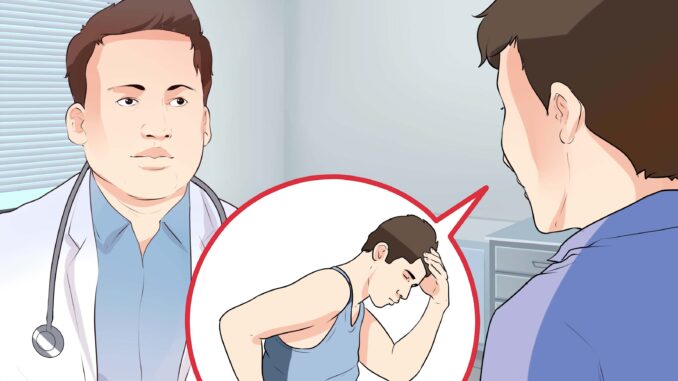
Lower back pain is one of the most common causes of people missing work. This situation is because your lower back supports your upper body’s weight, so it gets subjected to an incredible amount of stress and strain. The forces acting on your lower back are particularly harsh during the day due to twisting and lifting.
The symptoms of lower back pain range from dull aches to shooting or stabbing pains. These pains can make it difficult to move, straighten your back, or stand up.
Acute back pain can present suddenly, often following a sports injury or heavy lifting. If the pain lasts for more than three months, it is considered to be chronic.
Lower back pain can come on if you bend the wrong way while lifting a heavy object. You also might experience it if you are suffering from a degenerative condition such as arthritis.
Whatever the cause of your lower back pain, it is difficult to shake it. Approximately twenty-five percent of Americans claim to have had a recent bout of lower back pain. Practically everyone will experience some level of lower back pain at some point during their lives.
At certain times, lower back pain can be severe. For instance, if you have been injured and are experiencing weakness, numbness, or a tingling sensation in your legs. If you have these symptoms, you should call your doctor. If your lower back pain is only mild, we have several tips that can help you deal with it.
Apply ice to the affected area during the first 24 to 48 hours following your injury. The cold will reduce the inflammation caused by the injury, according to the University of Maryland’s Professor of Physical Therapy E. Anne Reicherter.
Heating the affected area will provide some comfort from the pain. However, the heat increases the amount of inflammation around the injured area. Heat should only be used after the first 48 hours following the injury.
When using ice or heat, you should remove either after twenty minutes to give your skin a rest from the heat or chill. If the pain persists, you should consult your doctor.
Maintain Movement
Your spine is designed to move, so you should try to maintain your normal range of movement, and do your normal daily activities.
Continue going to work and doing light chores, like walking the dog, or making the bed. As you start to feel better, you can begin to raise your activity levels to include aerobic exercises such as cycling or swimming.
Merely taking a walk can maintain movement in your back, so don’t try to overdo things.
Control Your Weight
Maintaining movement and light exercise will help you keep your weight under control, as will sticking to a healthy diet. Your ideal weight is defined by your body mass index (BMI), which is a ratio of your weight compared to your height. Being overweight causes additional stress on your lower back and spine.
Maintain Your Strength
When your back pain clears up, you can reduce the risk of it returning by strengthening the muscles that provide support for your lower back. Extensor muscles help to maintain your spine in the correct posture and alignment.
Strong abdominal, pelvic, and hip muscles will also provide you with more significant support for your back. However, avoid harsh exercises like abdominal crunches, as these will subject your back to more stress.
Regular Stretching
Sitting at a desk all day in a hunched-over position is not suitable for your back. Every twenty minutes or so, you should get up and stretch in the opposite direction to counter the prolonged sitting position
At the same time, be sure to give your legs a stretch, as sitting down is giving them no exercise. Yoga is the perfect exercise routine to make sure you are stretching your body correctly.
Improve Your Ergonomics
You might be working in an environment that is not good for your back. Try to redesign your working space so that it has better ergonomics. Do not sit hunched over, and avoid having to stretch to operate your mouse or keyboard. Using a good quality chair that allows you to place your feet flat on the floor, will support your back while you are at your desk.
Wear Sensible Shoes
Try exchanging your platform shoes, or high heels with something a little more practical and supporting. The higher the heels are on your shoes, the more unstable your posture is, increasing strain on your lower back.
Stop Smoking
Smoking increases the risk of you developing spinal osteoporosis or other bone-related conditions. Osteoporosis can go on to produce fractures in your spine. Research studies have recently concluded that smokers suffer more instances of lower back pain than non-smokers.
Maintain a Correct Posture
Slumping or hunching make it difficult for your back to support your body weight properly. You should pay particular attention to your posture when you are lifting something substantial, and never bend at the waist when lifting. Instead, maintain a straight back, and bend at the knees.
Try Some Non-Prescription Pain Relief Medication
There are plenty of over-the-counter medications that will provide you with comfort from your back pain. Aspirin and Ibuprofen are two such medicines.
You should check with your doctor before taking any medication to ensure it will not affect any existing treatment. If you have a history of medical problems such as kidney disease, ulcers, or liver disease, you should avoid taking certain medications.
When to Call the Doctor
You should call the doctor in the following circumstances:
- Your back pain is persisting for more than 2-3 days.
- It is painful when you are lying down.
- Your legs feel weak or numb.
- You have trouble walking or standing.
- Your experience bladder or bowel trouble.
These signs could be an indication of an underlying medical issue or problem with your nerves.

Leave a Reply